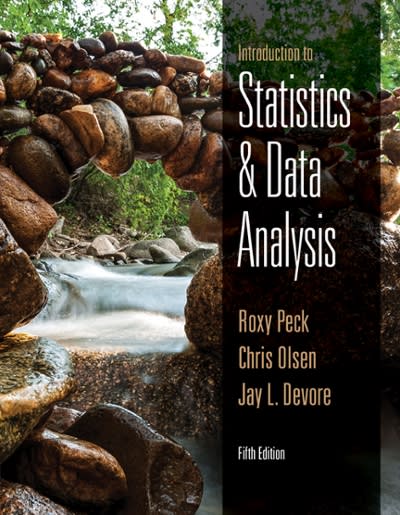7.90 Example 7.32 examined rainfall data for MinneapolisSt. Paul. The square-root transformation was used to obtain
Question:
7.90 ● Example 7.32 examined rainfall data for Minneapolis–St. Paul. The square-root transformation was used to obtain a distribution of values that was more nearly symmetric than the distribution of the original data. Another transformation that has been suggested by meteorologists is the cube root:
transformed value 5 (original value)1/3. The original values and their cube roots (the transformed values)
are given in the following table:
Original Transformed Original Transformed 0.32 0.68 1.51 1.15 0.47 0.78 1.62 1.17 0.52 0.80 1.74 1.20 0.59 0.84 1.87 1.23 0.77 0.92 1.89 1.24 0.81 0.93 1.95 1.25 0.81 0.93 2.05 1.27 0.90 0.97 2.10 1.28 0.96 0.99 2.20 1.30 1.18 1.06 2.48 1.35 1.20 1.06 2.81 1.41 1.20 1.06 3.00 1.44 1.31 1.09 3.09 1.46 1.35 1.11 3.37 1.50 1.43 1.13 4.75 1.68 Construct a histogram of the transformed data.
Compare your histogram to those given in Figure 7.38. Which of the cube-root and square-root transformations appear to result in a histogram that is more nearly symmetric?
Step by Step Answer:

Introduction To Statistics And Data Analysis
ISBN: 9781305445963
5th Edition
Authors: Roxy Peck, Chris Olsen, Jay L Devore






